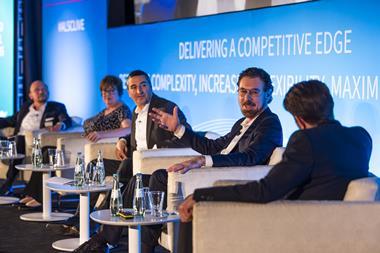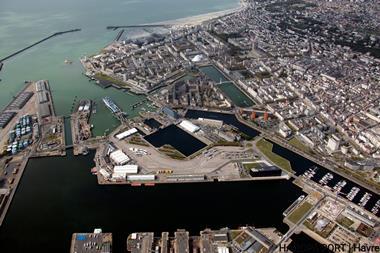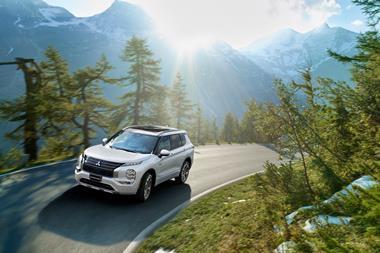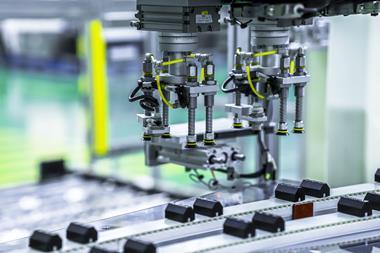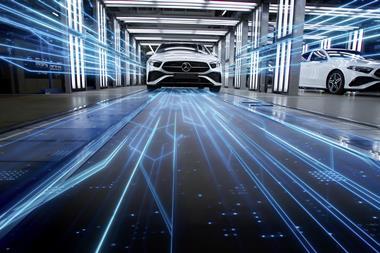Gerald Lee, vice president, vehicle planning and logistics, Subaru of America, and Glenn Clift, president and chief executive officer at Glovis America, joined editor Christopher Ludwig and publisher Louis Yiakoumi, together audience members from United Road, Fiat Chrysler, Jack Cooper, Tesla and others in discussing some of the big themes from this year’s conference.
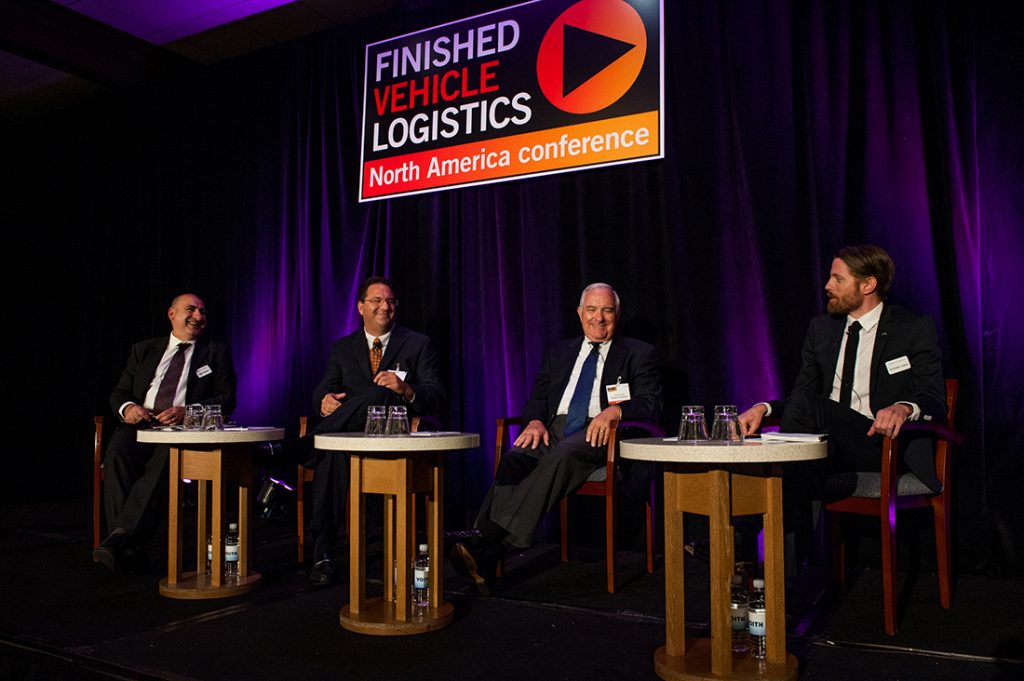
…On key takeaways from FVL North America 2015
 Gerald Lee, vice president, vehicle planning and logistics, Subaru of America: I thought the conference this year was definitely more positive than the discontent of prior years. It’s great to see the railroads show up with force on stage, and the information about maritime has been a bit of a surprise as I didn’t know much about that. It is exciting to see the industry back to 16-17m units. A few years ago we had a depression the automotive industry, not just a recession, and now we’re in an exciting time with good prospects.
Gerald Lee, vice president, vehicle planning and logistics, Subaru of America: I thought the conference this year was definitely more positive than the discontent of prior years. It’s great to see the railroads show up with force on stage, and the information about maritime has been a bit of a surprise as I didn’t know much about that. It is exciting to see the industry back to 16-17m units. A few years ago we had a depression the automotive industry, not just a recession, and now we’re in an exciting time with good prospects.
The information about Mexico was surprising, too. I hadn’t heard about issues surrounding vandalism, or shipping out of Mexico. It makes you wonder when a bargain is not a bargain? Perhaps when you can’t move your products efficiently or damage free.
 Glenn Clift, president and CEO, Glovis America: Everyone here is in agreement that the industry is strong, the volume is good, and we will continue to grow. Railroads have put in a lot about the investment they’re making, and the truckers I’ve talked to are doing the same. I was happy to see so many people come. It shows people want to improve the industry. Some of the past meetings were a bit more heated, and this was less so, which shows there’s been progress.
Glenn Clift, president and CEO, Glovis America: Everyone here is in agreement that the industry is strong, the volume is good, and we will continue to grow. Railroads have put in a lot about the investment they’re making, and the truckers I’ve talked to are doing the same. I was happy to see so many people come. It shows people want to improve the industry. Some of the past meetings were a bit more heated, and this was less so, which shows there’s been progress.
…On benchmarking vehicle logistics
Glenn Clift, Glovis America: our central company in Korea audits us, but they’re disappointed there isn’t a central database to compare how we rank against others. We would be happy to do it, not with names, but you could see among participants where you rank. I get quizzed by customers as to how we compare to the rest of the US… we think we know but we don’t know for sure. If we had a way of knowing whether you get better service with higher rates, for example, it might convince people to make investments. But some companies paying higher rates don’t seem to get better service. We’re willing to share our data but others aren’t, and you need a good group to compare.
Gerald Lee, Subaru: Our benchmarks are really internal. We have to be realistic in our expectations and how to account for truck shortages, or issues with the railroads. We’re too busy to answer a thousand questions about benchmarking. Some people get a good service because of where they’re located. Many uncontrollable factors affect service and rate.

Gerald Lee, Subaru: Our spare parts department does participate in Carlyle’s benchmarking group, and they do pretty well in the ratings. But I’m one of their customers at ports and processing centres, waiting for timely delivery of parts and accessories – sometimes I’m not that impressed.
Glenn Clift, Glovis America: A few years ago people saw logistics as a competitive advantage. If I hurt the other guy it would be better for me. I don’t see that as much nowadays. That’s a good thing. When I first came into the business, Hyundai and Kia didn’t want to share even with each other, since they are in competition. They definitely didn’t want to give away the advantage to the other guy. How many companies today wouldn’t want to work with others?
…On being a preferred customer
Glenn Clift, Glovis America: I hope that those of you in the room who supply services to us agree that we’re pretty loyal. Some companies will go out for bid every three years just because. Most of our contracts are evergreen: if the rates are good for both of us and they do a good job, why fix what isn’t broken? If you switch vendors there’s always a bit of chaos. You should only make change when there’s a need.
Gerald Lee, Subaru: It’s about cost, service levels, quality and damage prevention. We make changes when we have to but we prefer not to. There’s a start-up cost of making switches and a new vendor may not be as good as we thought they were.

Kathleen McCann, CEO, United Road: There is a lot of collaboration that goes on, maybe small ‘c’ collaboration rather than grand collaboration. A few examples, as Gerald’s presentation showed, incentivising the dealers towards extended hour deliveries, that is a really big deal. We focus a lot on is what we do to improve the experience of our car haulers. We work with industry groups and look at what we can go to our OEM partners with. Another example is the remarketed side of things, in terms of pulling waste, getting the driver in and out faster. It is happening.
We all have responsibility where we see possibilities for improvement. Many OEM ask us, what are the best practices of others? The onus is on us to bring those ideas when we see them, but everyone has a role – whether it’s the, processor, railroads or trucking or car companies.
Gerald Lee, Subaru: My impression is that there is more co-loading of different brands on trucks today then there was 5-10 years ago.
Kathleen McCann, CEO, United Road: We absolute co-load, our customers are very open to it. We try to mix our loads, we’re taking new vehicles out, remarketed on the way back, or POVs [privately owned vehicles], there are all types of opportunities.
Wayne Pollack, managing director, Car Delivery Network: In previous sessions we had others, including Toyota, calling for a collaborative platform where everyone in the industry can go to one portal to see the flow information. Working with Matt Cartwright from United Road, we’ve agreed to move that forward. It is an open invitation for others to join as well. Collaboration is alive and well.
…On planning and predicting business
Glenn Clift, Glovis America: We get annual forecasts from our customers, which are updated for a five-year period: it’s pretty rough data. For example, we didn’t have a Mexico factory on there a couple of years ago, now we do. The data has been pretty accurate and I have even questioned the predicted growth in some areas, but it has come through. It’s pretty detailed but not detailed enough for logistics: no volume details, where it’s coming from, and where it’s going.
…On long-term contracts
Gerald Lee, Subaru: Five years is probably the longest contract we’ve offered, outside a port terminal. We just extended our agreement with the port of Vancouver, which we’ve used for 20 years, until 2030.
When you factor in the cost of living to a contract, I’m a bit wary, as you would need to pay drivers more than the increase to the cost of living. The vendor would come back and say it’s not working, and I’d tell the vendor they’re not providing the service. Why would I sign knowing that?
Andrea Amico, president, Jack Cooper Logistics: I don’t think we could do a ten-year contract. It is too difficult to know what’s going to happen out there.
…On mid-size trucking companies
Bill Schroeder, general manager, Auto Haulers Association of America: I would say two thirds of our members have fewer than 50 trucks. On the one hand it’s a huge struggle as they pay top dollar for everything they buy, but I doubt they’re going to go away. One thing we’re doing with collaboration is to help these guys be successful. There is a lot of variability in the sector and the need for spot services; it is good for carmakers to know that truckers have the right insurance and good CSA scores and can keep your KPIs. These guys do a lot of work in the remarketing and used car sector, perhaps hauling new vehicles on a backhaul. I’m very optimistic about the future for small tier carriers. There’s always friction in the industry where you have two or three huge companies, and then several thousand that are small, but I don’t see them going anywhere for a long time.
…On implementing supply chain IT systems
Glenn Clift, Glovis America: Most of the systems we use are custom built, rather than off the shelf. We have a sister company that does all the programming we need, and it’s been fairly smooth. One area we’re trying to develop is locating vehicles in a parking lot. We’ve gone through RFID tags, which weren’t worth buying. They look nice but didn’t really work. We’ve talked about GPS tracking devices in the yard, but they could not locate the car accurately enough to its exact place, though I have heard that the technology is getting better… we’re currently using old technology, where we scan a label to key in a vehicle, but a printout shows exactly what bay the car is parked in.
"For a longer contract, you would need to feel like you’re getting something in return, whether that’s a better rate, or better service. Some parts of the industry would prefer not to have longer-term contracts. " - Glenn Clift, Glovis America
Gerald Lee, Subaru: The IT people that support my team are quasi-team members: at least half the meetings we have the IT people are with us. They understand what we’re trying to do. Technology implementation is always hard and you have to get over it as quickly as possible. You need to test as quickly as you can, get over the glitches as quickly as possible, and get on with it.
…On the single biggest waste in automotive logistics
Gerald Lee, Subaru: From the import side, it’s the variability of vessels arrivals and volume of unloading. As much as we try to smooth it out, we’re processing every day, and we might not have anything for awhile, and then we have back-to-back boats. If we could even the flow a bit more that would be beneficial to us – we’re talking about space at the ports. We do more accessorisation than most brands, so it’s important to be able to schedule and plant our workflow.
Glenn Clift, Glovis America: One place where we see waste is in loading vehicles onto trucks. Why are we wasting drivers’ time at the yard? They have to find the cars, get them to the truck and load them, sometimes at night. The truckers could send us the information and time, then we could get temporary labour to go out to the yard and bring the cars in a row waiting for him – sort of like a concierge service. We’ve managed to inspect them and the driver hasn’t spent an hour looking for cars. Even at short notice that could work.
Or perhaps we could look into drop and hook, where the truck simply pulls up and drops the trailer, and hooks another one. As loading is more difficult and technical than loading, it would mean that we could use or attract a wider pool of drivers, who wouldn’t have to spend so much time loading.
David Michaelson, outbound logistics manager, Tesla Motors: We looked into the drop and hook model and we think it is a good idea, but it is capital intensive. You need a power source for the hydraulics, as not all are self-contained. If everyone else did the same thing it would help with backhauls.
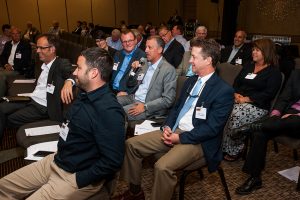
Andrea Amico, Jack Cooper Logistics: I love where this conversation is going. I think the biggest waste today is the difficulty in getting a pilot project going, with the risk that something is going to fail. On the remarketing side in particular we need a lot more resistance to risk. Not everything needs to succeed. We are all economic animals; we will collaborate fiercely when there is an economic argument. All it takes is to work with our competitors, come up with ideas where everyone can win. We hope more communication like this goes on. We believe that a lot of power will come in the new systems and IT in this area.
Christopher Ludwig contributed reporting.

















